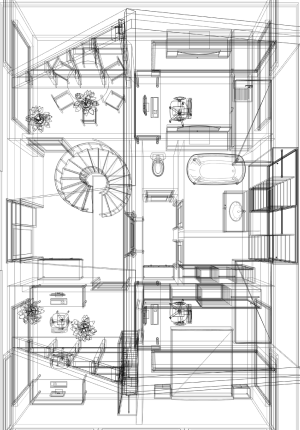What’s the Best Temperature for my AC System?
It’s normal to think that the best temperature for our AC system is simply how we want it to be. But it’s time we know and remember the other factors that can either give us the best or the worse from our HVAC unit. In this blog post, we’ll delve into these factors to help you determine the perfect temperature setting for your AC system.
Comfort Preferences
When it comes to comfort, we all have our unique preferences. Some like it chilly, while others prefer a slightly warmer indoor environment. The sweet spot for most people falls between 75 and 78 degrees F (24-26 degrees C) for cooling. This temperature range provides a harmonious blend of comfort and energy efficiency.
However, remember that comfort is subjective. It’s essential to find the temperature that suits you and your family best. If you find yourself shivering at 75 degrees, don’t hesitate to nudge the thermostat up a degree or two. After all, comfort is a significant component of your home’s atmosphere.
Energy Efficiency
While comfort is crucial, so is energy efficiency. With rising energy costs and environmental concerns, it’s wise to strike a balance between comfort and energy savings. Here are some energy-efficient temperature strategies:
- Raise the Temperature When Away: When no one’s home, consider setting your thermostat a few degrees higher. Many homeowners find that maintaining the temperature at around 80 to 85 degrees F (27-29 degrees C) during absences strikes a balance between saving energy and returning to a comfortably cool home.
- Invest in a Programmable Thermostat: If you want to optimize energy efficiency without sacrificing comfort, invest in a programmable thermostat. These smart devices allow you to schedule temperature changes based on your daily routine. You can program your AC to cool the house down before you return from work or wake up in the morning, ensuring that you’re comfortable when you need to be.
Climate Considerations
Climate plays a significant role in determining your AC temperature settings. Here are some climate-specific considerations:
- Hot and Humid Climates: In regions with scorching summers and high humidity levels, you might need to set your AC to a lower temperature to maintain comfort. However, always be mindful of energy consumption. Running your AC continuously at a low setting can lead to hefty energy bills.
- Mild Climates: If you live in an area with mild temperatures, you’re in luck. You can often rely on natural ventilation during cooler parts of the day or night and minimize your AC usage. On days when it’s sweltering, use your AC selectively and maximize cross-ventilation to keep your home comfortable.
Sleeping Temperature
Your ideal sleeping temperature may differ from your daytime comfort zone. Many people find it most comfortable to set the thermostat slightly lower (around 70 to 75 degrees F or 21-24 degrees C) when they’re heading to bed. Cooling the bedroom can promote better sleep quality. If you find this range too cold, consider using fans or opting for lighter bedding to enhance your comfort at higher nighttime temperatures.
Air Quality Matters
While temperature is crucial, it’s not the only factor affecting your indoor comfort. Air quality plays a significant role as well. Adequate ventilation, humidity control, and air filtration can all impact your well-being. Invest in air purifiers, keep your home well-ventilated, and maintain the right indoor humidity levels for a healthier and more comfortable living environment.
Routine Maintenance
Maintaining your AC system is vital for both comfort and energy efficiency. Regularly clean or replace air filters, clean coils, and schedule professional inspections. A well-maintained AC system is more likely to operate efficiently at your chosen temperature settings, saving you money in the long run and extending the life of your system.
Zoning Solutions
If you want to take your comfort and energy efficiency to the next level, consider installing a zoned HVAC system. Zoning allows you to set different temperatures for different areas of your home. This can be particularly useful if certain rooms are more challenging to cool than others. By customizing each zone’s temperature, you can optimize comfort and reduce energy waste.
In conclusion, finding the perfect temperature setting for your AC system involves a delicate balance between comfort, energy efficiency, and personal preferences. There’s no one-size-fits-all answer, as the ideal setting can vary from person to person and from region to region. The key is to prioritize your


